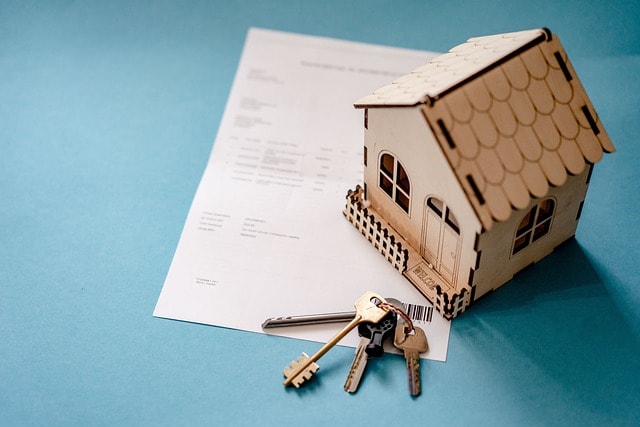As a business finance broker in Australia, I’ve seen firsthand how stamp duty can significantly impact commercial property transactions.
Whether you’re a seasoned investor or a first-time buyer, understanding the ins and outs of stamp duty is crucial for making informed decisions in the commercial real estate market.
In this comprehensive guide, I’ll walk you through everything you need to know about stamp duty on commercial property in Australia, including recent changes, state-by-state breakdowns, and answers to frequently asked questions.
For example, the Australian Capital Territory (ACT) is phasing out stamp duty in favor of land tax, highlighting regional differences in stamp duty policies.
What is Stamp Duty?
Before we dive into the specifics, let’s start with the basics. Stamp duty, also known as transfer duty in some states, is a tax imposed by state and territory governments on certain transactions, including property purchases.
For commercial property, stamp duty is typically calculated based on the purchase price or market value of the property, whichever is higher.
The Impact of Stamp Duty on Commercial Property Transactions
As you already know, stamp duty can add a significant cost to commercial property purchases, often amounting to tens or even hundreds of thousands of dollars. Because of this, it’s a crucial factor to consider when budgeting for a property acquisition.
The exact amount you’ll pay depends on various factors, including:
-
The state or territory where the property is located
-
The purchase price or market value of the property
-
The type of commercial property (e.g., retail, office, industrial)
-
Any applicable exemptions or concessions
Eligibility for concessional rates may depend on the value of the entire property being transferred.
Recent Trends and Changes in Stamp Duty on Commercial Property
Because our politicians and laws frequently change, so can stamp duty in Australia constantly evolve, with state governments regularly reviewing and adjusting their policies.
Some recent trends and changes include:
-
Push for Reform: There’s an ongoing debate about replacing stamp duty with a broader-based land tax system. The ACT is already phasing out stamp duty in favour of land tax, and New South Wales has introduced an optional annual property tax for some buyers as an alternative to stamp duty.
-
Foreign Investor Surcharges: Several states have introduced additional stamp duty surcharges for foreign investors in recent years, which can significantly increase the overall tax burden for international buyers.
-
Digital Transformation: Many states are moving towards electronic conveyancing and digital stamping processes, streamlining the application and payment of stamp duty.
Stamp Duty Rates by State
One of the most confusing aspects of stamp duty to my clients (most of whom are in the process of applying for commercial real estate loans) is that rates and thresholds vary significantly between states and territories. The rates and thresholds can also vary depending on whether the transaction involves a relevant property, such as commercial versus non-commercial settings.
To help you navigate this complexity, I’ve compiled a table breaking down the current stamp duty rates formulas for commercial property in each Australian state and territory.
Commercial Property Stamp Duty Rates by State
Current transfer duty rates for commercial properties across Australia - 2025
State/Territory |
Property Value |
Duty Rate/Amount |
Foreign Surcharge |
Special Notes |
|---|---|---|---|---|
$0-$16k $16k-$35k $35k-$93k $93k-$351k $351k-$1.168M $1.168M-$3.505M Over $3.505M |
1.25% $200 + 1.5% $485 + 1.75% $1,500 + 3.5% $10,530 + 4.5% $47,295 + 5.5% $175,830 + 7% |
9% |
Premium rates only apply to residential over $3M |
|
$0-$25k $25k-$130k $130k-$960k $960k-$2M Over $2M |
1.4% $350 + 2.4% $2,870 + 6% $52,670 + 5.5% $109,870 + 6.5% |
8% |
Transitioning to annual property tax |
|
$0-$5k $5k-$75k $75k-$540k $540k-$1M Over $1M |
Nil 1.5% $1,050 + 3.5% $17,325 + 4.5% $38,025 + 5.75% |
8% |
Generally lower rates vs other states |
|
$0-$85k $85k-$125k $125k-$925k $925k-$2M Over $2M |
1.9% $1,615 + 2.85% $2,755 + 4.75% $40,755 + 5.15% $96,117.50 + 5.25% |
7% |
Concessions may apply under $200k |
|
Commercial If not qualifying: $0-$12k $12k-$30k $30k-$50k $50k-$100k $100k-$200k $200k-$250k $250k-$300k $300k-$500k Over $500k |
ZERO* 1% $120 + 2% $480 + 3% $1,080 + 3.5% $2,830 + 4% $6,830 + 4.25% $8,955 + 4.75% $11,330 + 5% $21,330 + 5.5% |
7% |
*Offices, retail, industrial = $0 since July 2018 |
|
$0-$3k $3k-$25k $25k-$75k $75k-$200k $200k-$375k $375k-$725k Over $725k |
$50 flat $50 + 1.75% $435 + 2.25% $1,560 + 3.5% $5,935 + 4% $12,935 + 4.25% $27,810 + 4.5% |
8% |
Standard rates apply to commercial |
|
Under $525k $525k-$3M $3M-$5M Over $5M |
Complex formula* 4.95% 5.75% 5.95% *V × 0.0657 + (188 × V ÷ 5000) |
Nil |
No foreign buyer surcharge |
|
$0-$200k $200k-$300k $300k-$500k $500k-$750k $750k-$1M $1M-$1.455M Over $1.455M |
2% $4,000 + 3.55% $7,550 + 3.75% $15,050 + 4.65% $26,675 + 5.15% $39,550 + 5.25% $63,437.50 + 4.95% |
Nil |
No foreign buyer surcharge |
Important Notes
- South Australia: Commercial properties (offices, retail, industrial) classified as "qualifying land" pay ZERO stamp duty since 1 July 2018. This is a massive competitive advantage.
- Foreign Surcharges: These typically apply to residential properties. Commercial property foreign surcharges vary by state - verify with state revenue offices.
- Rates Current: These rates are current as of 2025 but may change. Always verify with official state revenue offices by clicking the state name links above.
- Additional Costs: Remember to budget for registration fees, legal costs, and other transfer expenses.
- Complex Transactions: Mixed-use properties, related party transfers, and corporate transfers may have different rules.
- Official Sources: Click on any state/territory name to visit their official revenue office website for the most up-to-date information.
Use our commercial property stamp duty calculator to work out your specific amount.

When to Pay Stamp Duty
Stamp duty on commercial property is typically payable within three months from the date of sale or transfer. However, the exact timing can vary depending on the state or territory where the property is located. In some regions, you may need to pay stamp duty at the time of settlement, while in others, it might be due within a specified timeframe after settlement.
It’s crucial to be aware of these deadlines because failing to pay stamp duty on time can result in penalties and interest charges. To avoid any complications, it’s advisable to consult with a solicitor or conveyancer who can guide you through the process and ensure that your stamp duty is paid correctly and on time. This professional advice is invaluable in navigating the specific requirements of your state or territory.
How to Pay for Stamp Duty
Paying stamp duty on a commercial property involves several steps, and it’s highly recommended to seek the assistance of a solicitor or conveyancer to ensure everything is handled correctly. Here’s a general outline of the process:
-
Determine the Amount of Stamp Duty Payable: Use a stamp duty calculator or consult with a professional to figure out how much stamp duty you owe.
-
Prepare the Necessary Documents: Gather all required paperwork, including the contract of sale, transfer documents, and any other relevant materials.
-
Lodge the Documents with the Relevant Authority: Submit your documents to the appropriate state or territory revenue office or the Australian Taxation Office (ATO).
-
Pay the Stamp Duty: Depending on the options available, you can pay online, by phone, or in person.
By following these steps and seeking professional advice, you can ensure that your stamp duty payment is accurate and timely, avoiding any potential issues.
Calculating Stamp Duty
Calculating stamp duty on a commercial property can be intricate, and it’s wise to consult a solicitor or conveyancer to ensure accuracy. Here are the general steps involved:
-
Determine the Dutiable Value of the Property: This is usually the purchase price or market value of the property, whichever is higher.
-
Determine the Applicable Stamp Duty Rate: The rate depends on the state or territory where the property is located and the type of property being purchased.
-
Apply the Stamp Duty Rate to the Dutiable Value: This calculation will give you the total amount of stamp duty payable.
Formula for Calculating Stamp Duty
The formula for calculating stamp duty on a commercial property is as follows:
Stamp Duty = (Dutiable Value x Stamp Duty Rate) + (Additional Fees and Charges)
Where:
-
Dutiable Value is the purchase price or market value of the property, whichever is higher.
-
Stamp Duty Rate is the applicable rate for the state or territory.
-
Additional Fees and Charges include any extra costs such as conveyancing or registration fees.
Using this formula and seeking professional advice can help ensure that your stamp duty calculation is accurate and comprehensive.
Strategies to Minimise Stamp Duty
While stamp duty is an unavoidable cost in most commercial property transactions, there are some strategies that savvy investors and businesses can use to minimise their stamp duty liability:
-
Consider the Commercial Property Location: Given the significant variations in stamp duty rates between states, the location of your property can have a major impact on your tax liability. If you’re flexible on location, comparing stamp duty costs across different states could lead to substantial savings.
-
Explore Exemptions and Concessions: Each state offers various exemptions and concessions that could reduce your stamp duty bill. These often apply to specific industries, property types, or transaction structures. It’s worth investigating whether any of these apply to your situation.
-
Timing of Purchase: In some cases, the timing of your purchase can affect your stamp duty liability. For example, if a state government announces upcoming changes to stamp duty rates, timing your purchase accordingly could result in savings.
-
Property Value: Since stamp duty is typically calculated based on the property’s value, ensuring that you’re not overpaying for a property can help minimise your stamp duty. Always conduct thorough due diligence and consider getting independent valuations.
-
Transaction Structure: The way a transaction is structured can sometimes impact the stamp duty payable. For instance, in some cases, purchasing shares in a company that owns a property rather than purchasing the property directly can result in lower stamp duty. However, this approach comes with its own complexities and risks.
-
Seek Professional Advice: Given the complexity of stamp duty regulations and the significant sums involved, it’s always wise to seek advice from a qualified professional. A good property lawyer or tax advisor can help you navigate the rules and identify potential savings.

Importance of Professional Advice
Navigating the complexities of paying stamp duty on a commercial property can be daunting, which is why seeking professional advice is crucial. A solicitor or conveyancer can assist you in several ways:
-
Determine the Amount of Stamp Duty Payable: They can accurately calculate your stamp duty liability.
-
Prepare the Necessary Documents: Ensure all paperwork is correctly completed and submitted.
-
Lodge the Documents with the Relevant Authority: Handle the submission process to the appropriate revenue office.
-
Pay the Stamp Duty: Guide you through the payment process to ensure it’s done correctly.
-
Ensure Compliance: Help you adhere to all applicable laws and regulations.
Additionally, a professional advisor can help you identify any available concessions or exemptions, potentially saving you a significant amount of money. Their expertise is invaluable in ensuring that you navigate the stamp duty process smoothly and efficiently.
What will happen to Stamp Duty in Australia looking forward?
The stamp duty landscape in Australia is far from static. There’s ongoing debate about the future of this tax, with some economists and policymakers advocating for its abolition in favour of broader-based land taxes. The argument is that stamp duty creates a barrier to property transactions and can lead to inefficient use of property.
The ACT is already phasing out stamp duty, replacing it with an annual property tax. New South Wales has introduced an optional annual property tax for some buyers as an alternative to upfront stamp duty. It’s possible that other states may follow suit in the coming years.
As a specialist commercial finance broker, I’m keeping a close eye on these developments. Any significant changes to stamp duty policy could have major implications for commercial property investments and the broader real estate market.
Frequently Asked Questions
To wrap up this guide, let’s address some of the most common questions I receive about stamp duty on commercial property in Australia:
Do you pay stamp duty on commercial property in Australia?
Yes, stamp duty is generally payable on commercial property purchases in Australia. The amount varies depending on the state or territory where the property is located and the value of the property.
What are the new stamp duty rules in each state?
Stamp duty rules are subject to frequent changes. As of January 2026, the most significant recent changes include:
-
NSW: Introduction of an optional annual property tax for some buyers as an alternative to upfront stamp duty.
-
Victoria: Temporary increases in thresholds for stamp duty concessions for commercial and industrial properties in regional Victoria.
-
Queensland: Introduction of additional foreign acquirer duty on direct and indirect acquisitions of certain Queensland residential property.
Always check with the relevant state revenue office for the most up-to-date information.
What is the property tax in commercial?
In addition to stamp duty, commercial properties in Australia are subject to various other taxes, including:
-
Land tax: An annual tax based on the unimproved value of land holdings.
-
Council rates: Local government charges for services provided to the property.
-
Capital Gains Tax (CGT): Applicable when selling a commercial property for a profit.
The specific rates and thresholds for these taxes vary by location and property type.
Are there any stamp duty exemptions?
Yes, there are various exemptions and concessions available for stamp duty on commercial property. These vary by state but may include:
-
Exemptions for certain charity and non-profit organisations.
-
Concessions for primary production land.
-
Exemptions or concessions for corporate reconstructions.
-
First home buyer concessions (which sometimes apply to mixed-use commercial properties).
Do you pay land tax on commercial property?
Yes, land tax is generally payable on commercial property in Australia. It’s an annual tax based on the total unimproved value of your taxable land holdings. Rates and thresholds vary by state.
Is stamp duty payable on sale of business?
Stamp duty may be payable on the sale of a business, depending on the assets being transferred and the state where the business is located. In some states, stamp duty is payable on the transfer of business assets such as goodwill, intellectual property, and equipment. However, the rules are complex and vary significantly between jurisdictions. It’s always best to seek professional advice for your specific situation.
Where to from here?
Navigating the complexities of stamp duty on commercial property in Australia can be challenging, but it’s an essential part of any commercial property transaction. As a business finance broker, I’ve seen how a thorough understanding of stamp duty can lead to better investment decisions and potentially significant savings.
Remember, while this guide provides a comprehensive overview, stamp duty regulations are subject to change, and individual circumstances can greatly affect your stamp duty liability. Always seek professional advice tailored to your specific situation.
If you’re considering a commercial property purchase loan or have questions about financing options, don’t hesitate to reach out. I’m here to help you navigate the complexities of commercial property investment and find the best financial solutions for your business needs.
Call 1300 262 098 and our team would be happy to help with any questions you might have.

